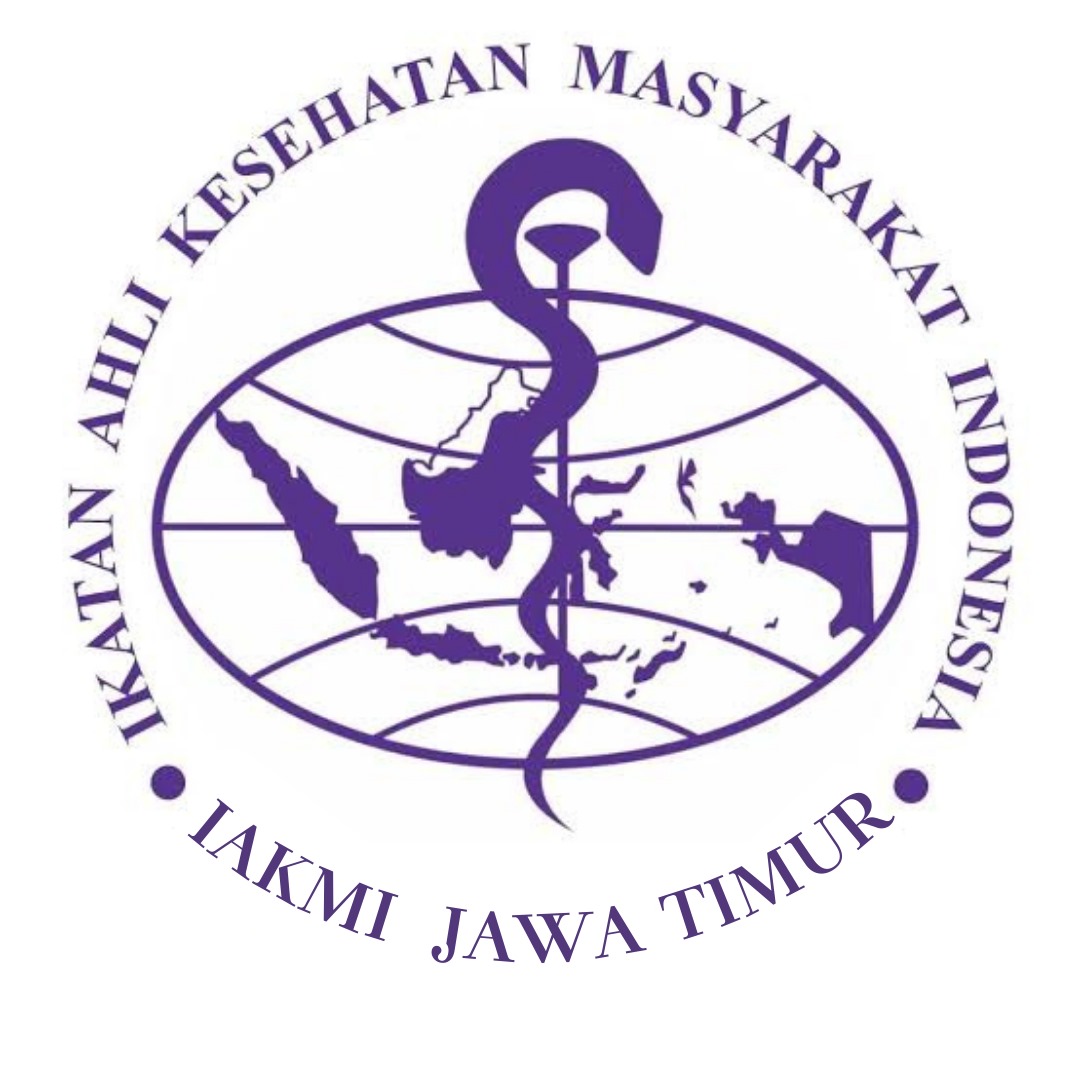The Relationship between Social Support and Vaping Behavior of Senior High Age Adolescents in Surabaya
Background: Smoking has a negative impact on health in people of all ages, especially adolescents. With technological advancements, cigarettes have taken on a new form: e-cigarettes. The US Food and Drug Administration (FDA) has begun to prohibit the use of e-cigarettes because they contain hazardous and carcinogenic tobacco specific nitrosamines and diethylene glycol (DEG). However, e-cigarettes are becoming increasingly popular in Indonesia, with an increasing number of users.
Objectives: To investigate the relationship between social support on smoking/vaping behaviors of senior high age adolescents in Surabaya.
Methods: This is a quantitative study with a cross-sectional and observational analytic design. The total number of respondents in this study was 145, as determined by the snowball sampling method. The independent variable is social support. Social support consists of instrumental support, informational support, emotional support, and appraisal support. The behavior of smoking/vaping is the dependent variable.
Results: The relationship among variables was measured by using Pearson Chi-Square Test. The result shows that there is a relationship of instrumental support (p=0.000), informational support (0.019), emotional support (p=0.000), and appraisal support (p=0.000) on smoking / vaping behavior in senior high age adolescents.
Conclusions: There is a relationship between social support and smoking / vaping behavior of high school age adolescents in Surabaya. Social support is important since it can influence the adolescents smoking behavior. It is hoped the family such as parents can provide a better understanding of the effect of smoking on health and for adolescents should be more selective with whom they hang out with and have the courage to refuse a friend's invitation to smoke.
Artanti, K. D. et al. (2017) ‘4th Indonesian Conference on Tobacco or Health 2017', in Deskripsi Perilaku Merokok E-Cigarette dan Konvensional Pada Anak Sekolah di Kota Surabaya. Jakarta: IAKMI, pp. 20–26. Available at: http://ictoh-tcscindonesia.com/wp-content/uploads/2018/01/Proceeding-Book-4th-ICTOH.pdf.
BPOM (2015) ‘Bahaya rokok elektronik', InfoPOM, 16(5), pp. 1–12. Available at: http://perpustakaan.pom.go.id/slims/repository/0515.pdf.
Caponnetto, P. et al. (2012) ‘The emerging phenomenon of electronic cigarettes', Expert Review of Respiratory Medicine, 6(1), pp. 63–74. doi: 10.1586/ers.11.92.
Cobb, N. K. et al. (2010) ‘Novel Nicotine Delivery Systems and Public Health: The Rise of the "E-Cigarette”', American Journal of Public Health, 100(12), pp. 2340–2342. doi: 10.2105/AJPH.2010.199281.
Departemen Kesehatan Republik Indonesia (2013) Riset Kesehatan Dasar (RISKESDAS). Jakarta: Badan Penelitian dan Pengembangan Kesehatan RI. Available at: http://www.litbang.depkes.go.id/sites/download/rkd2013/Laporan_Riskesdas2013.PDF.
European Lung Foundation (2020) ‘E-cigarettes, heat-not-burn and smokeless tobacco products', 16(1), p. 161ELF. doi: 10.1183/20734735.ELF161.
Goniewicz, M. L. et al. (2014) ‘Levels of selected carcinogens and toxicants in vapour from electronic cigarettes', Tobacco Control, 23(2), pp. 133–139. doi: 10.1136/tobaccocontrol-2012-050859.
Grana, R., Benowitz, N. and Glantz, S. A. (2013) ‘Background paper on E-cigarettes (electronic nicotine delivery systems)', Center for Tobacco Control Research and Education, University of California, San Francisco, a WHO Collaborating Center on Tobacco Control. Prepared for World Health Organization Tobacco Free Initiative, (December), pp. 1–109. Available at: https://escholarship.org/uc/item/13p2b72n.
Habibi, M. H. (2017) Hubungan antara perilaku merokok dengan harga diri pada remaja akhir. SKRIPSI. Available at: http://digilib.uinsby.ac.id/22325/7/Muhammad Hamdan Habibi_B77213087.pdf.
Hasna, F., Cahyo, K. and Widagdo, L. (2017) ‘Faktor-Faktor Yang Berhubungan Dengan Penggunaan Rokok Elektrik Pada Perokok Pemuladi Sma Kota Bekasi', Jurnal Kesehatan Masyarakat Universitas Diponegoro, 5(3), pp. 548–557. Available at: https://ejournal3.undip.ac.id/index.php/jkm/article/view/17287.
Kemenkes RI (2015) ‘Perilaku merokok masyarakat Indonesia', INFODATIN. Available at: https://www.pusdatin.kemkes.go.id/resources/download/pusdatin/infodatin/infodatin-hari-tanpa-tembakau-sedunia.pdf.
Komasari, D. and Helmi, A. F. (2000) ‘Faktor Faktor Penyebab Merokok pada Remaja', Jurnal Psikologi, 27(1), pp. 37–47. doi: https://doi.org/10.22146/jpsi.7008.
Meiyetriani, E. (2012) Perilaku Merokok, Tahapan Merokok & Penyakit Akibat Perilaku Merokok: Suatu Tinjauan Teoritis. Edited by T. Hasbullah. Jakarta: FKM UI. Available at: http://tcsc-indonesia.org/wp-content/uploads/2012/11/buku-Rokok-Mengapa-Haram-.pdf.
Notoatmodjo, S. (2010) Ilmu Perilaku Kesehatan. Jakarta: PT Rineka Cipta.
Palazzolo, D. L. (2013) ‘Electronic Cigarettes and Vaping: A New Challenge in Clinical Medicine and Public Health. A Literature Review', Frontiers in Public Health, 1. doi: 10.3389/fpubh.2013.00056.
Sarafino, E. P. (2014) Health Psychology : Biopsychososial Interactions 8th Edition. New Jersey: John Wiley & Sons Inc.
Scott, A. et al. (2018) ‘Pro-inflammatory effects of e-cigarette vapour condensate on human alveolar macrophages', Thorax, 73(12), pp. 1161–1169. doi: 10.1136/thoraxjnl-2018-211663.
Singh, T. et al. (2016) ‘Tobacco Use Among Middle and High School Students ” United States, 2011–2015', MMWR. Morbidity and Mortality Weekly Report, 65(14), pp. 361–367. doi: 10.15585/mmwr.mm6514a1.
Sodik, M. A. (2018) Merokok dan Bahayanya. Pekalongan: PT. NASYA EXPANDING MANAGEMENT. doi: 10.31219/osf.io/wpek5.
Sutha, D. W. (2016) ‘Analisis Lingkungan Sosial terhadap Perilaku Merokok Remaja di Kecamatan Pangarengan Kabupaten Sampang Madura', Jurnal Manajemen Kesehatan STIKES Yayasan RS. Dr. Soetomo, 2(1), pp. 43–59. Available at: https://media.neliti.com/media/publications/258436-analisis-lingkungan-sosial-terhadap-peri-8ae73fac.pdf.
Tridhonanto, A. (2014) Mengembangkan Pola Asuh Demokratis. Jakarta: PT Elex Media Komputindo.
Trtchounian, A., Williams, M. and Talbot, P. (2010) ‘Conventional and electronic cigarettes (e-cigarettes) have different smoking characteristics', Nicotine & Tobacco Research, 12(9), pp. 905–912. doi: 10.1093/ntr/ntq114.
Vardavas, C. I. et al. (2012) ‘Short-term Pulmonary Effects of Using an Electronic Cigarette', Chest, 141(6), pp. 1400–1406. doi: 10.1378/chest.11-2443.
Yulviana, R. (2015) ‘Faktor-Faktor yang Berhubungan dengan Kebiasaan Merokok pada Remaja Putra Kelas X dan XI di SMA Negeri 6 Pekanbaru', Jurnal Kesehatan Komunitas, 2(6), pp. 278–282. Available at: http://jurnal.htp.ac.id/index.php/keskom/article/download/89/73.
Copyright (c) 2022 Blasius Hasni Damarjati, Sri Widati

This work is licensed under a Creative Commons Attribution-ShareAlike 4.0 International License.
Media Gizi Kesmas by Unair is licensed under a Creative Commons Attribution-ShareAlike 4.0 International License.
1. The journal allows the author(s) to hold the copyright and to retain the publishing right of the article without restrictions.
2. The legal formal aspect of journal publication accessibility refers to Creative Commons Attribution-Share-Alike (CC BY-SA).
3. The Creative Commons Attribution-Share-Alike (CC BY-SA) license allows re-distribution and re-use of a licensed work on the conditions that the creator is appropriately credited and that any derivative work is made available under "the same, similar or a compatible license”. Other than the conditions mentioned above, the editorial board is not responsible for copyright violations.



















